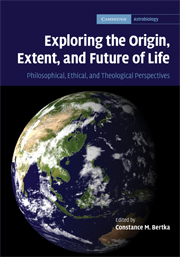 Exploring the Origin, Extent, and Future of Life
Exploring the Origin, Extent, and Future of Life from Part II - Extent of life
Published online by Cambridge University Press: 29 December 2010
Introduction
Astrobiology has life at its core: Where does life come from? Where is it going? Are we alone? While it includes the search for extraterrestrial life – the very bit that has so captured the public's attention – it uses life on Earth as its reference point. Of course this probably has less to do with philosophy, and more to do with practicalities. After all, there is only one place that we know with certainty contains life, and most likely an indigenous biota at that. So, planet Earth remains the reference point. Thus, a search for life elsewhere, even in our own solar system, must include an understanding of the known range of life on Earth. And, even before that, an understanding of what we mean by “life.”
Understanding the range of current life on Earth, and mapping it to current environments in the solar system, is only a start as it lacks the element of time. Life on Earth may have been substantially different when it arose around about 4 billion years ago because the environmental range on Earth was dramatically different. Similarly, the climatic conditions forecast for a billion or so years into the future are bleak for much of life as we know it, including ourselves. Without intervention, the Sun as we know it will not even exist.
To save this book to your Kindle, first ensure [email protected] is added to your Approved Personal Document E-mail List under your Personal Document Settings on the Manage Your Content and Devices page of your Amazon account. Then enter the ‘name’ part of your Kindle email address below. Find out more about saving to your Kindle.
Note you can select to save to either the @free.kindle.com or @kindle.com variations. ‘@free.kindle.com’ emails are free but can only be saved to your device when it is connected to wi-fi. ‘@kindle.com’ emails can be delivered even when you are not connected to wi-fi, but note that service fees apply.
Find out more about the Kindle Personal Document Service.
To save content items to your account, please confirm that you agree to abide by our usage policies. If this is the first time you use this feature, you will be asked to authorise Cambridge Core to connect with your account. Find out more about saving content to Dropbox.
To save content items to your account, please confirm that you agree to abide by our usage policies. If this is the first time you use this feature, you will be asked to authorise Cambridge Core to connect with your account. Find out more about saving content to Google Drive.